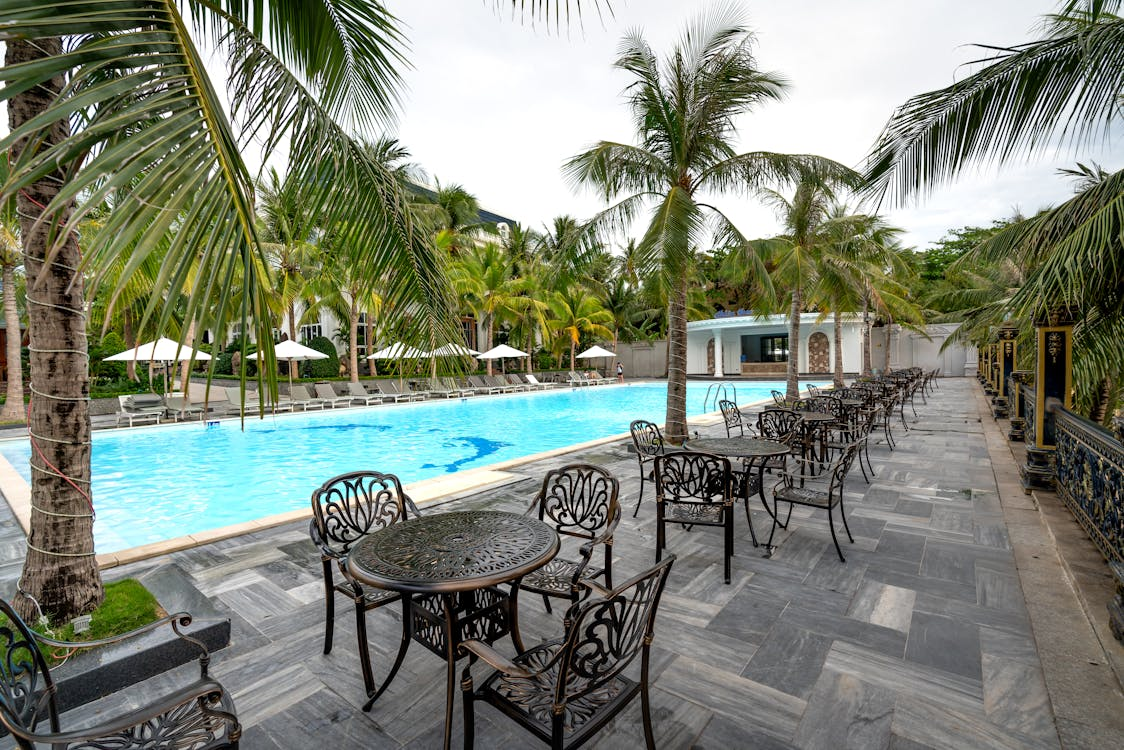
Maintaining a clean and safe pool is a common concern for pool owners, particularly when dealing with water quality issues. Regular testing and adjustment of chlorine levels are important to keep your pool water safe and enjoyable. Owners should also inspect and clean pool filters to prevent common issues like cloudy or murky water. These steps can address one of the biggest challenges faced by pool owners.
Another aspect to consider is the effect of weather and pool usage on water quality. Heavy pool use, rain, and hot weather can impact chlorine levels and water balance. To tackle this, pool owners may benefit from seeking a reliable pool service in Austin, which can provide expert cleaning and repairs to maintain crystal-clear water.
Tools like a pumice stone, stain eraser, or scale remover can help those dealing with stubborn issues such as calcium deposits. Staying proactive by regularly shocking the pool and checking the pump and filter can prevent these problems and keep the pool inviting for swimmers.
Understanding Pool Water Quality
Maintaining the right pool water quality is important to keep it safe and enjoyable. Key aspects include managing pH levels, using chlorine and sanitizers effectively, and balancing alkalinity and hardness.
The Role of pH in Pool Maintenance
The pH level measures how acidic or alkaline the pool water is on a scale from 0 to 14. Keeping the pH between 7.2 and 7.8 guarantees water comfort for swimmers and helps prevent equipment corrosion. Low pH can cause the water to become too acidic, irritating skin and eyes. High pH can make chlorine less effective, leading to bacterial growth. Regularly testing and adjusting pH helps maintain a balance that supports chlorine efficiency and swimmer comfort.
Importance of Chlorine and Other Sanitizers
Chlorine is a key component in keeping pool water clean. It works by killing harmful bacteria and viruses. In public pools, chlorine levels should be between 2-4 parts per million (ppm), while private pools usually require 1-3 ppm. Using chlorine alongside other sanitizers or enzymes is necessary to tackle contaminants like body oils or cosmetics. Regular testing with pool test strips is recommended to guarantee chlorine levels are adequate and consistent, preventing issues such as cloudy water or algae growth.
Balancing Alkalinity and Hardness
Alkalinity is a buffer for pH changes, helping stabilize the pool water. Ideal levels are generally between 80 and 120 ppm. When alkalinity is too low, pH can fluctuate widely, leading to possible damage to pool surfaces and irritation to swimmers. Too high alkalinity can lead to cloudy water and scaling on pool surfaces. Water hardness, mainly due to calcium, should also be in check to avoid scale or corrosion. Keeping these levels within the recommended range helps preserve pool equipment and maintain a pleasant swimming environment.
Preventive Measures and Maintenance Strategies
Keeping a pool clean and safe requires regular attention and specific strategies. Pool owners can prevent common water quality issues by maintaining a routine, using the right equipment, and adjusting for seasonal changes.
Regular Pool Cleaning Routines
Regular pool cleaning is key to maintaining clear and healthy water. This includes skimming the surface to remove debris like leaves and insects. Vacuuming the pool floor helps to remove dirt and sediment that sinks. Brushing the pool walls can prevent algae buildup, which is important for avoiding slippery surfaces and green water.

Testing the water weekly is recommended to check pH, chlorine, and other chemical levels. This prevents chemical imbalances that can lead to irritation or ineffective sanitization. Adjust these levels as needed to maintain a comfortable and safe swimming environment.
Proper Filtration System Practices
A clean and efficient filtration system helps keep water clear by removing smaller particles that cleaning alone may miss. It’s important to run the filter for the correct amount of time each day, which is typically between 8 to 12 hours for most pools, depending on size and usage.
Regularly check and clean the filter to guarantee it remains effective. Backwashing the filter can help remove trapped debris, allowing water to flow freely through the system. Be sure to inspect all parts of the filtration system for wear or damage to avoid any unexpected problems that might arise.
Effective Use of Pool Covers
Pool covers offer an excellent way to keep debris out and reduce the workload of manual cleaning. Using a cover when the pool is not in use can help maintain temperature and reduce evaporation.

This, in turn, saves water and keeps pool chemicals from dissipating too quickly.
Pool covers also provide a barrier against algae growth by limiting sunlight exposure on the water. When choosing a pool cover, consider ones made from durable materials that fit snugly over the pool. This guarantees maximum effectiveness in keeping out dirt and maintaining water quality.
Seasonal Pool Care Tips
Pool maintenance can vary with the seasons. During warmer months, evaporation increases, and pools are used more often, necessitating more frequent checks on water levels and chemical balances. In cooler months, pools may require less attention, but protecting against freezing temperatures and securing pumps and filters is important.
For those with cold winters, consider winterizing the pool by lowering the water level, draining equipment, and covering the pool securely. Conduct a thorough cleaning and chemical adjustment in spring to prepare for the busy swimming season ahead. Regular inspections and preventative actions can extend the life of the pool and reduce unexpected repair costs.
Conclusion
Keeping a pool clean is important for safe and enjoyable swimming. Regular maintenance tasks, like checking pH levels and using a pool cover, can help keep water quality in check. Proper water chemistry, including maintaining pH levels between 7.4 and 7.6, is important for swimmer comfort. Additionally, it’s important to work with a pool leak detection service to routinely inspect the pool for any issues. Leaks can come out of nowhere, causing safety issues and expensive repairs.
Rain can affect pool water, so having a maintenance plan is helpful. Using a pool cover, you can protect against debris and excess water, minimizing the effects of rain on the pool.
By avoiding common cleaning mistakes, pool owners can prevent water quality issues. Regular vacuuming and chemical testing are part of this process. Thoughtful steps like these guarantee a pool remains a clean and inviting space.












